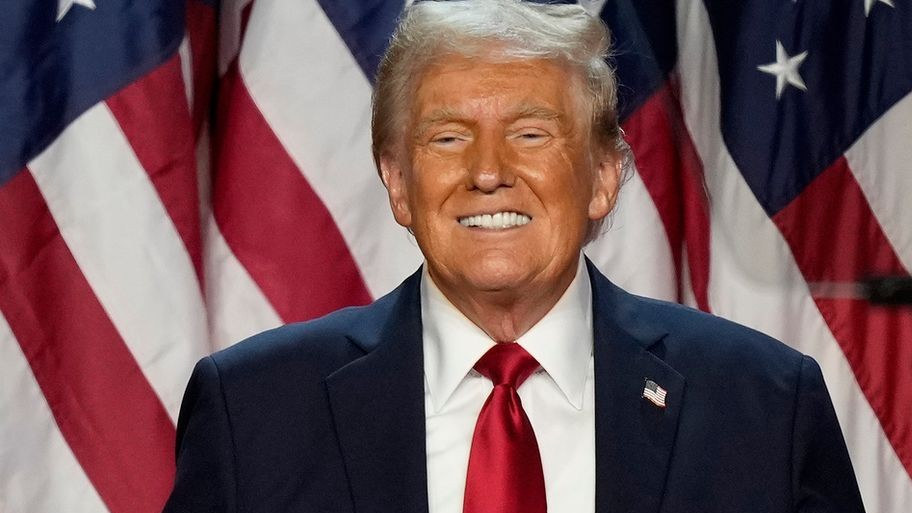WASHINGTON (TNND) — The dynamics of Donald Trump’s next four years in the White House have changed dramatically from his first election in 2016 as the Republican Party has been reshaped to match his political movement and major business CEOs have traveled to meet with him before he takes office again on Jan. 20.
The president-elect has maintained his tight grip over the Republican Party even after some major stumbles after his 2020 election loss, the Jan. 6 riot at the Capitol and a disappointing result in the 2022 midterms.
Calls for the party to move in a different direction after a grim two years quickly subsided once he reentered the presidential primary race and batted away his competition, culminating in his return to the White House next month and Republicans’ first win of the popular vote in 20 years.
Trump’s political resurgence has come along with a total remaking of the Republican Party where many of the lawmakers who once opposed him or his legislative priorities have retired, been taken out of office in a primary challenge or shifted their stances to align with the president-elect.
The changes to the party’s makeup and its platform have cleared the way for Trump to have outsized influence over what Republicans will pursue once they are sworn into their legislative trifecta early next year. High-profile companies that have at times resisted Trump have also changed their tune ahead of his second term as a stream of CEOs have made their way to his Mar-a-Lago estate in Florida to meet with the president-elect before he comes into office.
Meta CEO Mark Zuckerberg and billionaire Amazon founder Jeff Bezos are among the high-profile business leaders that have met with Trump recently, and billionaire Tesla, SpaceX and X owner Elon Musk is one of Trump’s biggest political and financial supporters.
“In 2016 there was a sense of disbelief turned into resistance for a lot of people. And now whether it’s activists or even powerful folks like these CEOs, there seems to be more of an acquiescence this time around,” said Chris Devine, an associate professor of political science at the University of Dayton. “It gives him an aura of popularity; some sense that it would be problematic to go against him. But at the same time, Trump’s always thrived on combat and has welcomed the challenges to him that people bring, that seems to almost motivate him.”
Trump has taken notice of the change in attitude, giving an assessment on the difference between his first transition period in 2016 to now during a press conference on Monday.
“The first term, everybody was fighting me,” he said. “In this term, everybody wants to be my friend.”
Republicans have already started to plan how the first 100 days of Trump’s second term will go, laying out a plan for the reconciliation process that will allow them to advance spending priorities without Democratic votes or the Senate filibuster getting in the way.
Trump has been using his influence over his party well before taking office, urging lawmakers to reject a bipartisan Senate agreement on immigration and the border earlier this year. The active fight on Capitol Hill over avoiding a government shutdown highlights both his command over his party and some of the limits of that authority with a slim majority.
Republicans balked at a bipartisan budget deal that leadership had struck to start the week after Trump came out against the legislation, forcing House Speaker Mike Johnson to figure out a new plan to work out a deal to avoid the government closing. The new deal stripped out provisions the president-elect opposed and included a two-year suspension of the debt ceiling he favored.
But 38 Republicans ultimately voted against it despite it receiving Trump’s approval and calling on the party to approve it. Several objected to raising the debt limit and others had issues with the levels of government spending and the nation’s ballooning deficit.
A slim majority in the House has hampered the GOP’s efforts to exert influence in Washington over the last two years with a Democratic Senate and President Joe Biden in the White House as several high-profile bills have failed due to Republican detractors.
Republicans will face the same narrow majority once the new Congress is sworn in. They do not have 60 seats to clear the filibuster in the Senate and will only be able to lose a handful of votes on any bill in the House, which will further test his grip over his party.
While Republican lawmakers are mostly in lockstep with Trump on many issues, it is difficult to perfectly navigate such narrow margins.
“You can’t get everyone in line when the margins are this tight. Even if you’re generally very successful at that, perfection is different standard, and you just can’t force people do what you want,” Devine said.



